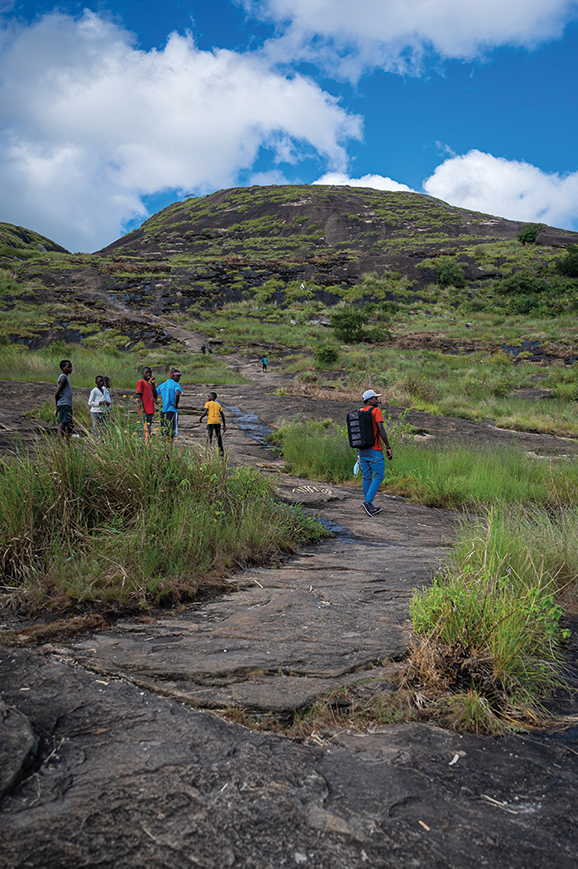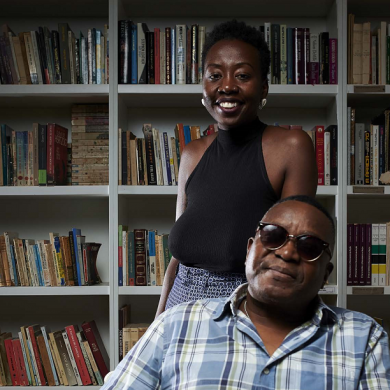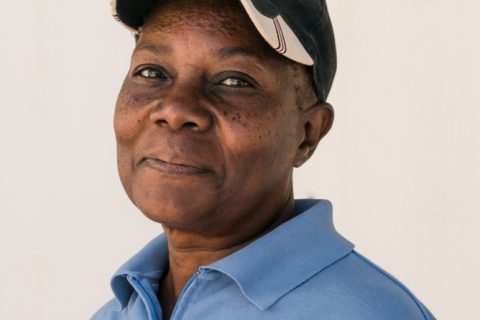Chimoio
Closer to the sky

Along the rock there are streams of water that run unhurriedly into puddles, perhaps where the idea that the “old man” cries arose.
When we arrived in the city of Chimoio, it was still the rainy season. But the sun was imposing, and so was the green; then we would realize that, in times like these, despite the fact that the sun seems omnipresent, the rain is almost always lurking, spasming, as if reminding us that she is the ruler of the skies. Chimanimani – the Reserve promoted to Park – was still closed. It would be a great wound if our trip was based on itineraries. But if travelling is a direct synonym for living, as the Portuguese writer José Luís Peixoto would say, and life does not follow scripts, discovering, experimenting and exploring is the verbal triad of those who allow themselves adventures.
After leaving the backpacks at the Hotel Castelo Branco, we started what in military language is called “recon”, this moment when we can step on unstable terrain without the shame or guilt of our inattention.
The profusion of taxi motorbikes, going up and down the paved or unpaved or potholed streets, places the city in permanent movement and the outsider – as we were – in a permanent state of alert. To say that Chimoio is a clean city is to repeat what is already known. What is not known – and that we would witness far into the night – are the large brooms of men and women who work the miracle of leaving everything clean for each morning.
The memory of the city is associated with the mountain known as Cabeça do Velho (“Old Man’s Head”). We continue to the Tambara 2 neighbourhood to find the place where this time sculpture is fixed to the rock. The mount’s real name is Bengo, but almost no one remembers to call it that. It is as if it were one of those nicknames that people give us and that, because we are so embarassed by it, it ends up gaining strength. We stay there trying to find the chin, the nose, the hollow of the eyes, the tears that lend it sadness, the forehead, the head of an old man permanently turned towards the sky (what conversations will he have with God?), whose body seems to extend throughout the city of Chimoio.
Being able to distinguish the features of the face is encouraging, but the mountains are like the sea, the experience is only complete when we allow ourselves to be taken in; the latter, who is naturally personified, calls for more closeness. But it wouldn’t be that day, there were other things to discover: the squares and gardens with handicrafts; the old man’s head made of black wood; some friends in conversations to deceive the time, others in love, a culture that is barely seen in big cities.

If Chimoio is a clean city, it is due to the large brooms of men and women who work the miracle of leaving everything clean for each morning.
Returning to the hotel, afraid that we will not be able to see everything there is to see, due to not enough time, we asked the receptionist what we cannot miss. Cabeça do Velho, says the lady whose name is really Recepcionista (receptionist). At first she seems to be enjoying herself, as if she, tired of seeing guests substituting her name for the job, would prefer to present herself like this. But, before our incredulity, she repeats it several times and even makes the name more formal, Recepcionista Mateus. If it weren’t for identity cards showing the year of birth as well – and being rude to know the age of a woman who didn’t set out to say it – we would have committed the indiscretion of asking to see it. We accept it, believing that it is one of those cases in which the name already guesses the future of those who carry it.
The next day dawns rainy, but soon the sun would blow away the dark clouds. Already afternoon, after a lunch finished with pudding, by the sugar that generates the energy that would be necessary for the climb, we were already there, ready. There are reports that Cabeça do Velho is a mountain that welcomes prayers, religious ceremonies for requests for blessing, but, as far as we could ascertain (and luckily for those who intend to climb it), it is not a mountain covered by the mantle of the sacred, requiring rituals for climbing; perhaps an individual ritual invoking endurance and breath for the near one hour it takes to reach the top of the “nose” or “forehead”, which are the highest points. Along the rock there are streams of water that run unhurriedly into puddles, perhaps where the idea that the “old man” cries arose. The pace of the climb is slow, as if we had the illusion that we were stroking the old man’s head with our feet. We reach the top, the sky closer, the buildings far away, perhaps God’s vision over the city.

The “Old Man’s Head” is the city’s main landmark, visible even in the local handicrafts.
▶ How to go
Fly with LAM from Maputo. The airport is just a few kilometres from the city centre.
▶ Where to sleep
Chimoio is a small city, but among hotels and guesthouses, there are a multitude of places to stay. The Índico team stayed at the Hotel Castelo Branco, a few minutes from the city centre.
▶ Where to eat
Hotel Castelo Branco‘s restaurant serves a multitude of dishes. But you can always head to the city centre where there are several restaurants, such as the Mawa Restaurant, which also has homemade food on the menu; try the cafreal chicken with peanut sauce.
▶ What to do
Cabeça do Velho is the biggest reference in the city. To watch it, the entrance to the Tambara 2 neighbourhood is a strategic location. Climbing is an experience that nourishes both body and memory. Travelling the streets on a motorcycle ride is also a good way to discover the city.
▶ What To Watch Out For
Bring a cool outfit to climb the mountain, water and a cereal bar to replenish the energy that is lost on the way up Cabeça do Velho.



































0 Comments